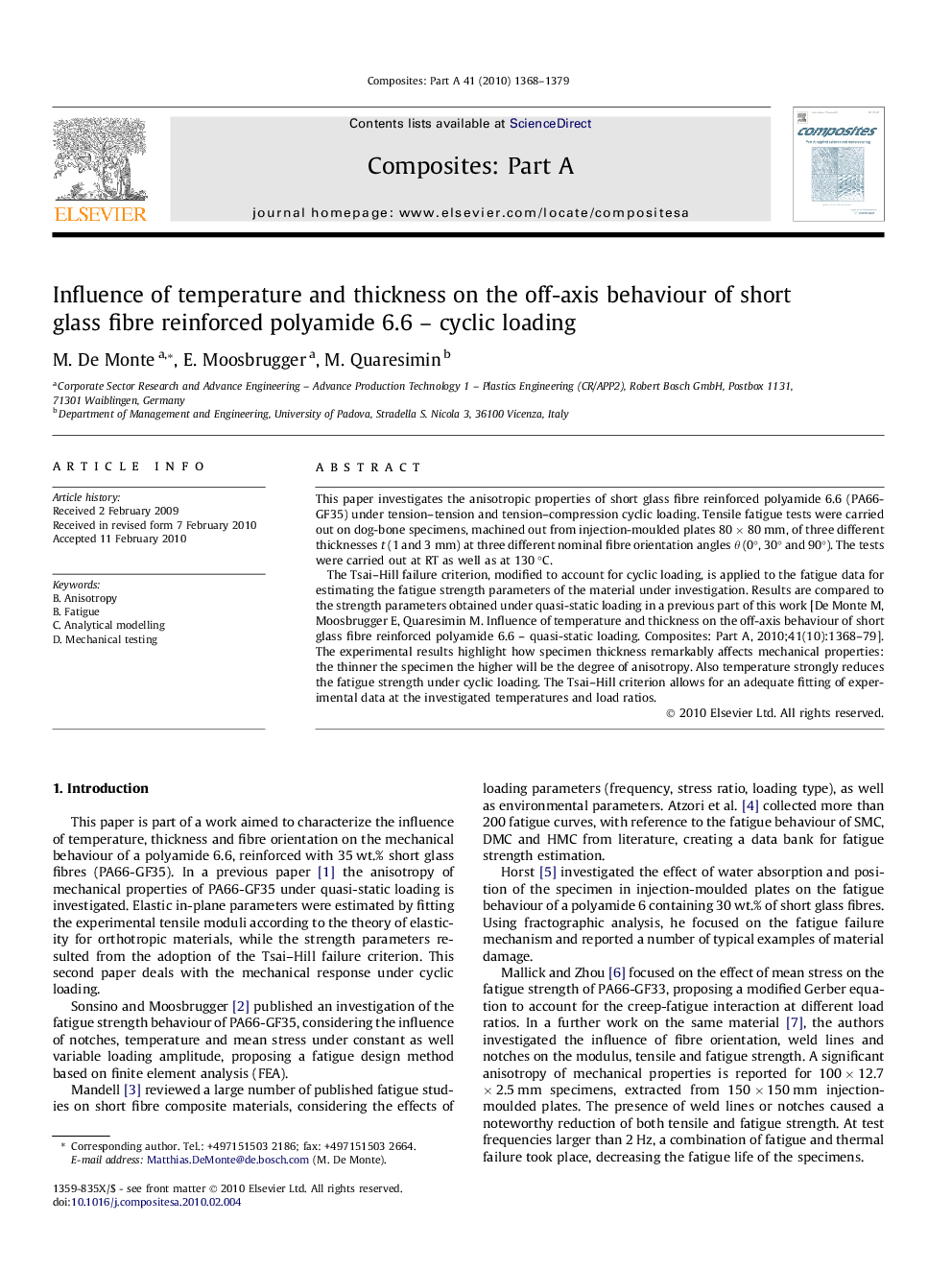| Article ID | Journal | Published Year | Pages | File Type |
|---|---|---|---|---|
| 1466798 | Composites Part A: Applied Science and Manufacturing | 2010 | 12 Pages |
This paper investigates the anisotropic properties of short glass fibre reinforced polyamide 6.6 (PA66-GF35) under tension–tension and tension–compression cyclic loading. Tensile fatigue tests were carried out on dog-bone specimens, machined out from injection-moulded plates 80 × 80 mm, of three different thicknesses t (1 and 3 mm) at three different nominal fibre orientation angles θ (0°, 30° and 90°). The tests were carried out at RT as well as at 130 °C.The Tsai–Hill failure criterion, modified to account for cyclic loading, is applied to the fatigue data for estimating the fatigue strength parameters of the material under investigation. Results are compared to the strength parameters obtained under quasi-static loading in a previous part of this work [De Monte M, Moosbrugger E, Quaresimin M. Influence of temperature and thickness on the off-axis behaviour of short glass fibre reinforced polyamide 6.6 – quasi-static loading. Composites: Part A, 2010;41(10):1368–79]. The experimental results highlight how specimen thickness remarkably affects mechanical properties: the thinner the specimen the higher will be the degree of anisotropy. Also temperature strongly reduces the fatigue strength under cyclic loading. The Tsai–Hill criterion allows for an adequate fitting of experimental data at the investigated temperatures and load ratios.
